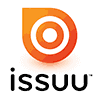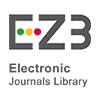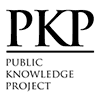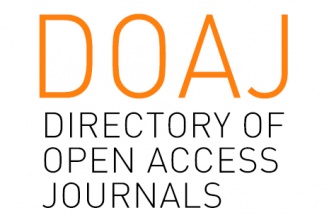Strategies of Teaching Pronunciation to Students with a Regional First Language Context: Using Interview
Abstract
This study aimed to investigate both the challenges and strategies involved in teaching pronunciation to students whose first language is a regional language. The research focused specifically on the instructional roles of teachers, deliberately excluding other groups, such as native speakers or experienced educators, to maintain a consistent lens on classroom practices. The objective was to explore how teachers address the complexities of teaching pronunciation in a context where regional linguistic influences play a significant role in shaping students' learning experiences. The study employed a descriptive qualitative research design, gathering in- depth data from five master's students who were teaching at senior high schools in rural regions, including Cirebon, Java, Medan, and Banjarmasin. Data collection methods included interviews and observations, providing rich, firsthand insights into the teachers' experiences and methods. The qualitative nature of the research allowed for a comprehensive exploration of the unique challenges faced by these educators, as well as the strategies they developed to overcome them. Data were analyzed to identify recurring themes related to pronunciation instruction and to understand the contextual factors affecting teaching effectiveness. The findings revealed a range of challenges, including difficulties with intonation, pronunciation accuracy, fostering phonological awareness, and managing the impact of cultural influences on pronunciation learning. Teachers employed various effective strategies to address these issues, such as customizing lessons to students' linguistic backgrounds and proficiency levels, incorporating regional cultural elements into pronunciation exercises, and utilizing visual aids to tackle specific issues like vowel articulation and intonation patterns. The study concludes that adopting a more personalized and culturally sensitive approach in pronunciation instruction significantly enhances students' ability to learn and improve their pronunciation skills. These insights offer practical recommendations for educators working with students who speak regional languages, suggesting that tailored and culturally aware teaching practices can lead to better learning outcomes.
Keywords
Full Text:
PDFReferences
Akande, A. T. (2005). The pronunciation problems in the English of some Yoruba learners.
Akhter, S., Haidov, R., Rana, A. M., & Qureshi, A. H. (2020). Exploring the significance of speaking skill for EFL learners. PalArch's Journal of Archaeology of Egypt/Egyptology, 17(9), 6019-6030.
Aliaga, C. (2007). The role of phonetic training in L2 speech learning. In Proceedings of the Phonetics Teaching and Learning Conference (PTLC2007). University College.
Aspers, P., & Corte, U. (2017). What is qualitative in qualitative research.
International Sociology, 32(1), 1-11. https://doi.org/10.1177/0268580916689476
Ball, D. L. (1988). Knowledge and reasoning in mathematical pedagogy: Examining what prospective teachers bring to teacher education (Unpublished doctoral dissertation). Michigan State University, East Lansing.
Brown, L. (2021). Integrating technology in pronunciation teaching: A comprehensive approach. Journal of Language Learning Technologies, 25(2), 134-150.
Brown, H. D., & Abeywickrama, P. (2010). Language assessment: Principles and classroom practices (Vol. 10). Pearson Education.
Celce-Murcia, M., Brinton, D. M., & Goodwin, J. M. (2010). Teaching pronunciation (2nd ed.). Cambridge University Press.
Cohen, L., Manion, L., & Morrison, K. (2011). Research methods in education
(7th ed.). Routledge.
Cohen, L., Manion, L., & Morrison, K. (2018). Research methods in education
(8th ed.). Routledge.
Cox, M., & Chien, S. (2022). Bridging the gap: Methods for teaching intonation and pronunciation. International Journal of Language Studies, 16(3), 340-355. https://doi.org/10.1177/21582440221117703
Creswell, J. W., & Poth, C. N. (2018). Qualitative inquiry and research design: Choosing among five approaches (4th ed.). SAGE Publications.
Creswell, J. W., & Creswell, J. D. (2018). Research design: Qualitative, quantitative, and mixed methods approaches (5th ed.). SAGE Publications.
Derwing, T. M., & Munro, M. J. (2015). Pronunciation fundamentals: Evidence- based perspectives for L2 teaching and research (Vol. 42). John Benjamins Publishing Company.
Derwing, T. M., & Munro, M. J. (2022). Pronunciation instruction in ESL: Why, how, and what? Language Teaching Research, 26(1), 59-72.
Dixon, L. J. (2021). Exploring effective pronunciation teaching strategies for EFL learners with regional dialects: A comparative study. Journal of Language Teaching and Research, 12(2), 211-225. https://doi.org/10.17507/jltr.1202.05
Dizon, G., & Wong, J. (2021). Phonological awareness in language learning: Implications for teaching pronunciation. TESOL Quarterly, 55(1), 38-56.
Djurayeva, Y. A. (2021). Enhancing English pronunciation in learning process.
Academic Research in Educational Sciences, 2(CSPI Conference 2), 302-306.
Dörnyei, Z., & Csizér, K. (2005). The effects of intercultural contact and tourism on language attitudes and language learning motivation. Journal of Language and Social Psychology, 24(4), 327-357.
Feiman-Nemser, S. (1983). Learning to teach.
Feiman-Nemser, S., & Remillard, J. (1995). Perspectives on learning to teach. National Center for Research on Teacher Learning, Michigan State University.
Flege, J. E., & Robert, J. (1981). The effects of age on second language acquisition and pronunciation. Journal of Phonetics, 9(4), 315-328.
Flege, J. E., Munro, M. J., & MacKay, I. R. (1995). Factors affecting strength of perceived foreign accent in a second language. The Journal of the Acoustical Society of America, 97(5), 3125-3134.
Foote, J. A., & Trofimovich, P. (2021). Exploring the use of speech recognition technology for pronunciation assessment. Language Learning & Technology, 25(1), 63–82. https://doi.org/10.125/llt.2021
Gomez, R., & Garcia, M. (2022). Interactive and communicative activities in pronunciation teaching: An effective approach. Educational Research Review, 17(4), 450-465. https://doi.org/10.1016/j.edurev.2022.03.006
Hassan, E. M. I. (2014). Pronunciation problems: A case study of English language students at Sudan University of Science and Technology. English Language and Literature Studies, 4(4), 31.
Hsu, H.-Y., & Hsieh, H.-P. (2021). Enhancing English pronunciation learning through interactive phonetics apps. Journal of Language Teaching and Research, 12(5), 810-820. https://doi.org/10.17507/jltr.1205.14
Hu, G. (2021). Challenges and strategies in teaching English pronunciation in non-native contexts: A review of literature. Language Teaching Research, 25(4), 435-457. https://doi.org/10.1177/1362168820934194
James, F., & Port, R. (1981). Cross-language phonetic interference: Arabic to English. Language and Speech, 24(2), 125-146.
Johnson, P., & Williams, R. (2019). The role of macro skills in pronunciation teaching. Language Teaching Research, 23(4), 467-485.
Jones, A. (2018). Articulatory accuracy and its impact on communication. Journal of Phonetics and Pronunciation Studies, 10(1), 45-62.
Ketabi, S., & Saeb, F. (2015). Pronunciation teaching: Past and present.
International Journal of Applied Linguistics and English Literature, 4(5), 182-189.
Kumar, R., & Patel, S. (2022). Tailoring pronunciation instruction for learners with regional accents: Innovations and challenges. TESOL Quarterly, 56(3), 678- 693. https://doi.org/10.1002/tesq.309
Kormos, J., & Denes, M. (2019). Cultural influences on pronunciation instruction: Bridging the gap between native and non-native speakers. Applied Linguistics, 40(2), 85-98.
Lee, J.-S., & Kim, E.-J. (2023). The influence of cultural background on pronunciation teaching methods. Journal of Cross-Cultural Studies, 18(4), 80-95. https://doi.org/10.1080/0970299X.2023.2247483
Lee, H., & Riazi, A. (2019). The use of visual and auditory aids in pronunciation instruction: A review. Language Teaching Research, 23(3), 201-220.
Liu, S.-Y., & Lin, H.-L. (2023). The effectiveness of digital tools in pronunciation practice for ESL students. TESOL Journal, 14(1), 60-75. https://doi.org/10.1002/tesj.730
Malik, M. (2013). Qualitative research design: An overview. International Journal of Educational Research, 12(2), 233-240. https://doi.org/10.1016/j.ijer.2013.08.003
Nespor, J. (1987). The role of beliefs in the practice of teaching. Journal of Curriculum Studies, 19(4), 317-328.
Otlowski, M. (1998). Pronunciation: What are the expectations? The Internet TESL Journal, 4(1), 115-129.
Patkowski, M. S. (1990). Age and accent in a second language: A reply to James Emil Flege. Applied Linguistics, 11(1), 73-89.
Rao, P. S. (2019). The importance of speaking skills in English classrooms.
Reynolds, A. (1992). What is competent beginning teaching? A review of the literature. Review of Educational Research, 62(1), 1-35.
Reynolds, M. (1989). Knowledge base for the beginning teacher. Pergamon Press.
Riyanti, D. (2019). The role of motivation in learning English as a foreign language. Journal of English Language Teaching Innovations and Materials (JELTIM), 1(1), 29-35.
Saito, K., & Plonsky, L. (2019). Effects of second language pronunciation teaching revisited: A proposed measurement framework and meta-analysis. Language Learning, 69(3), 652–708. https://doi.org/10.1111/lang.12345
Smith, M. (2020). Micro skills in pronunciation instruction: A detailed analysis.
Journal of Applied Linguistics, 18(3), 215-230.
Smith, J. (2023). Phonetic diversity in English: Challenges for language learners.
Journal of Phonetics and Language, 21(4), 205-220.
Varasarin, P. (2007). An action research study of pronunciation training, language learning strategies and speaking confidence (Doctoral dissertation). Victoria University, Thailand.
Witte, S., & Harden, T. (2023). Building confidence through feedback: A study on pronunciation improvement in language learners. Language Learning & Technology, 27(1), 9-24. https://doi.org/10.1016/j.llt.2023.01.003
Yadgarova, Z. (2023). Importance of teaching the pronunciation of suprasegmental features of English. Центр Научных Публикаций (buxdu. uz), 34(34).
Yates, L., & Zielinski, B. (2009). Give it a go: Teaching pronunciation to adults. AMEPRC.
Yin, R. K. (2018). Case study research and applications: Design and methods
(6th ed.). SAGE Publications.
Zhang, L., & Han, J. (2022). The impact of peer feedback on pronunciation accuracy and confidence in English language learners. Language Education in Asia, 13(2), 64-78. https://doi.org/10.5746/leia/22/v13/a2/zhan
DOI: http://dx.doi.org/10.18415/ijmmu.v12i8.6517
Refbacks
- There are currently no refbacks.
Copyright (c) 2025 International Journal of Multicultural and Multireligious Understanding

This work is licensed under a Creative Commons Attribution-NonCommercial-NoDerivatives 4.0 International License.
https://ijmmu.com
editor@ijmmu.com
facebook.com/ijmmu
Copyright © 2014-2018 IJMMU. All rights reserved.



































